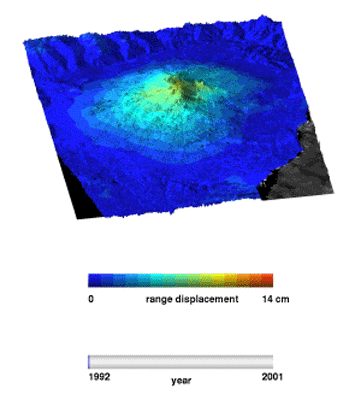Lowering of ERS-2 orbit continues
The orbit of ESA’s retired ERS-2 observation satellite is being lowered to reduce the risk of collision with other satellites or space debris. The goal is to leave it well below most operating polar satellites by the end of August.
The first in a series of thruster firings, each lasting about 300 seconds, was commanded by the mission control team at ESA’s European Space Operations Centre in Germany on 6 July to lower the orbit of the Agency’s veteran satellite.
The burns have since lowered the satellite from its initial 785 km-high orbit to about 700 km.
Engineers are closely monitoring the manoeuvres via ESA’s ground station in Kourou, French Guiana, and the Malindi station in Kenya.
“We achieved our first 700 km target altitude on 27 July,” said Frank Diekmann, the ERS-2 operations manager.
“Between now and the end of August, ERS-2 will be brought down to about 570 km, where the risk of collision with other satellites or space debris is drastically reduced.”
The last phase, called ‘passivation’, will begin late in August or early September. During this phase, a number of long burns will deplete remaining fuel and, finally, the batteries will be disconnected and the transmitters switched off.
Reentry of the satellite into Earth’s atmosphere is projected to occur within 25 years. Continued tracking will allow prediction of the reentry time and path.

ERS-2 was launched in 1995, four years after ERS-1, the first European Remote Sensing satellite.
With 20 years of continuous measurements, the two missions paved the way for the development of many new Earth observation techniques in the areas of atmosphere, land, ocean and ice monitoring.
ERS-2 also carried the first European high-precision instrument to measure stratospheric ozone concentrations. It was crucial for observing the evolution of annual ozone depletion over Antarctica.
ERS-2 travelled 3.8 billion km during its lifetime, providing data for thousands of scientists and projects.















 Germany
Germany
 Austria
Austria
 Belgium
Belgium
 Denmark
Denmark
 Spain
Spain
 Estonia
Estonia
 Finland
Finland
 France
France
 Greece
Greece
 Hungary
Hungary
 Ireland
Ireland
 Italy
Italy
 Luxembourg
Luxembourg
 Norway
Norway
 The Netherlands
The Netherlands
 Poland
Poland
 Portugal
Portugal
 Czechia
Czechia
 Romania
Romania
 United Kingdom
United Kingdom
 Slovenia
Slovenia
 Sweden
Sweden
 Switzerland
Switzerland






























